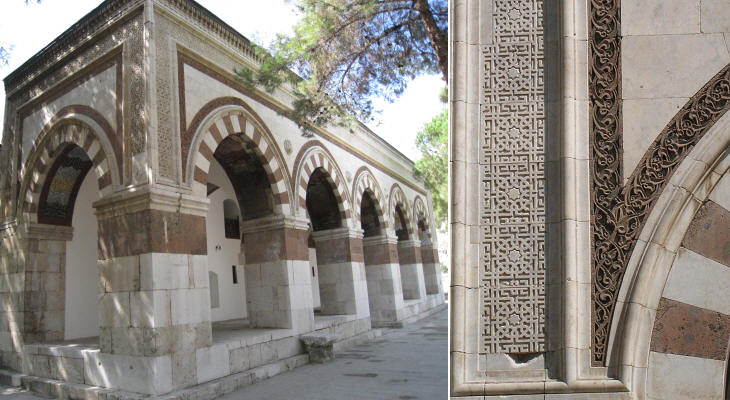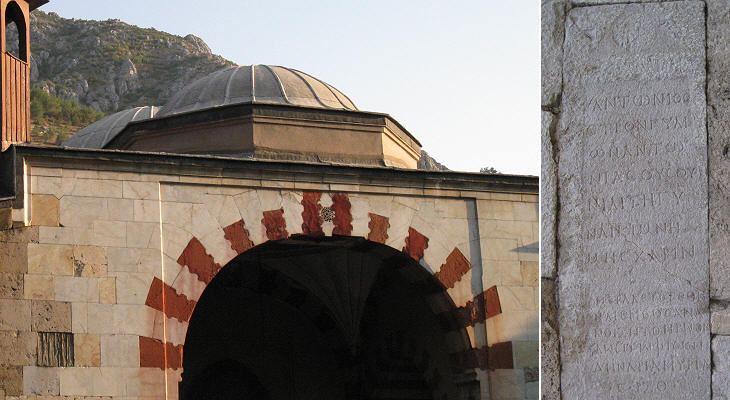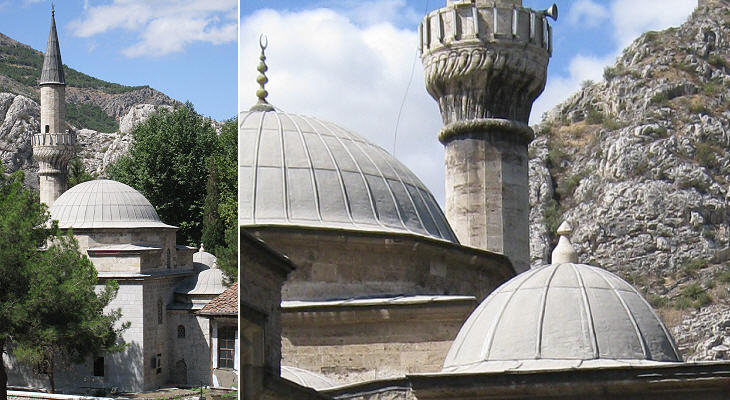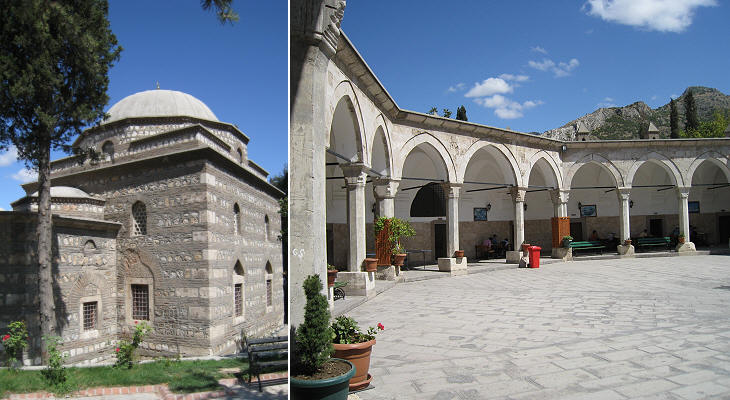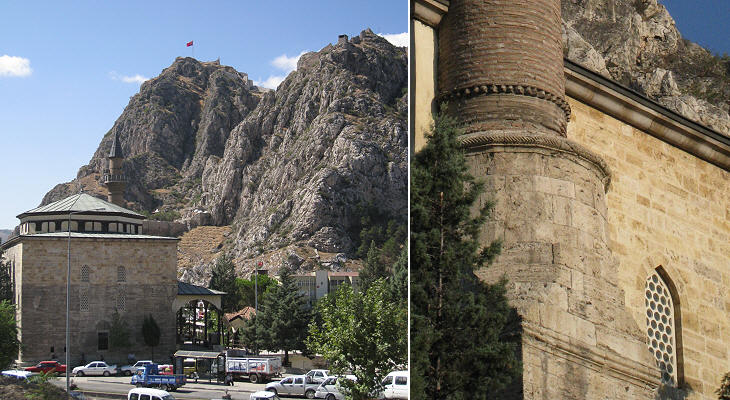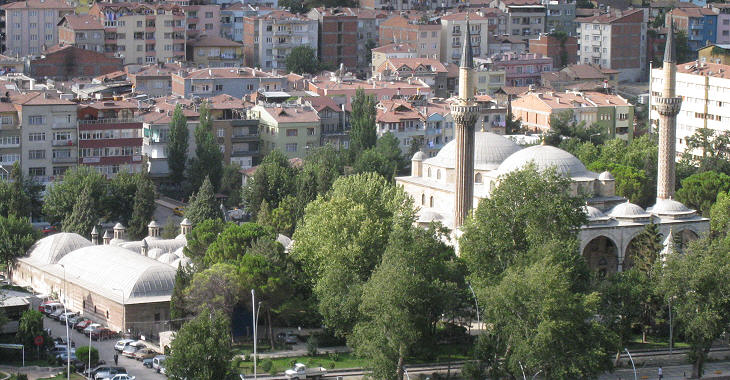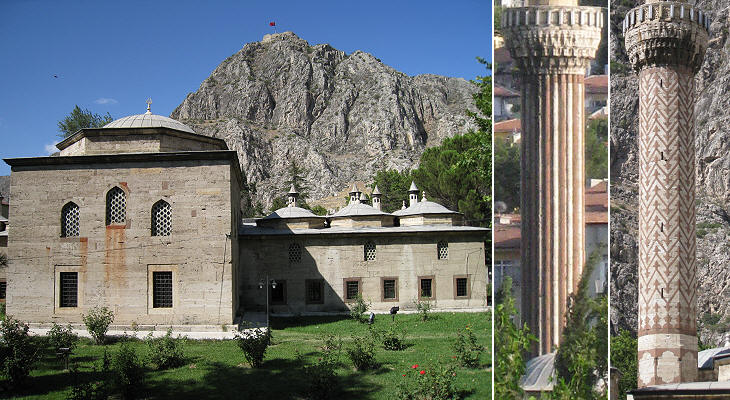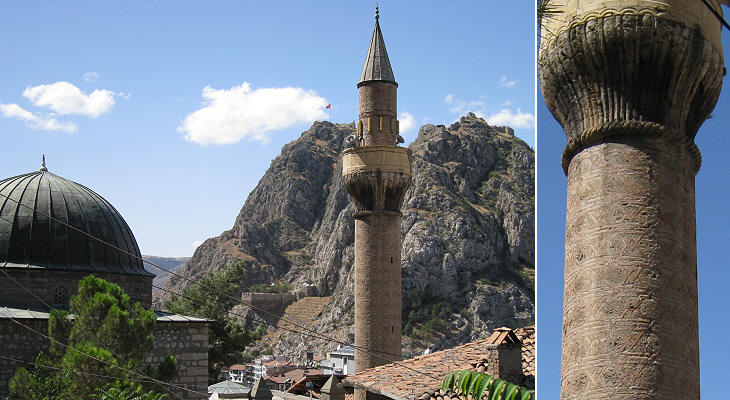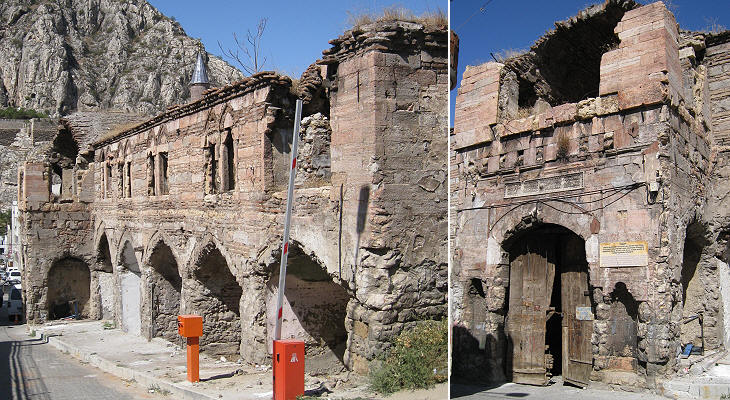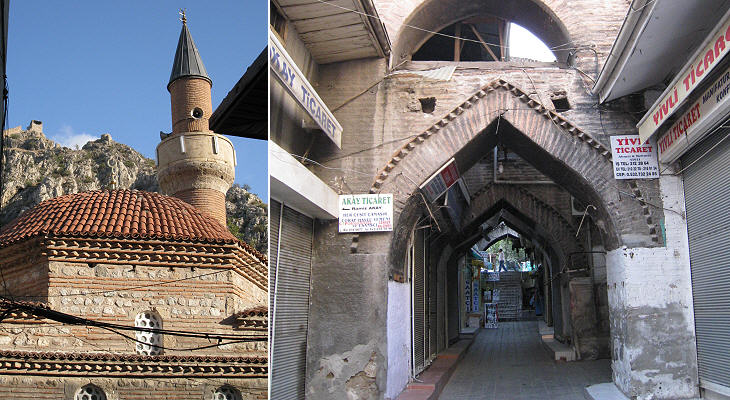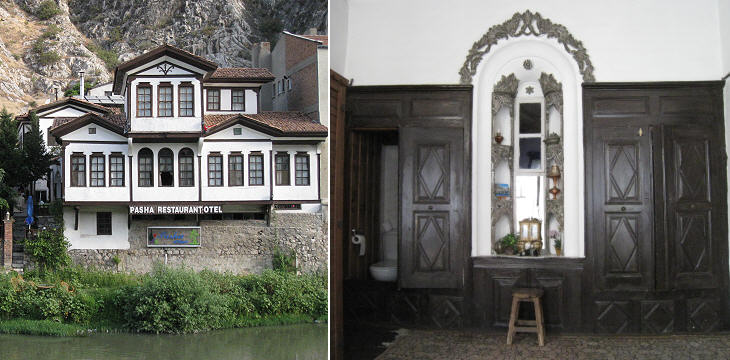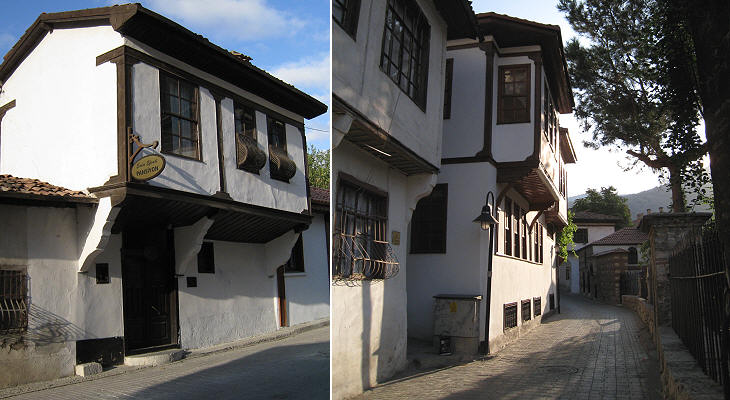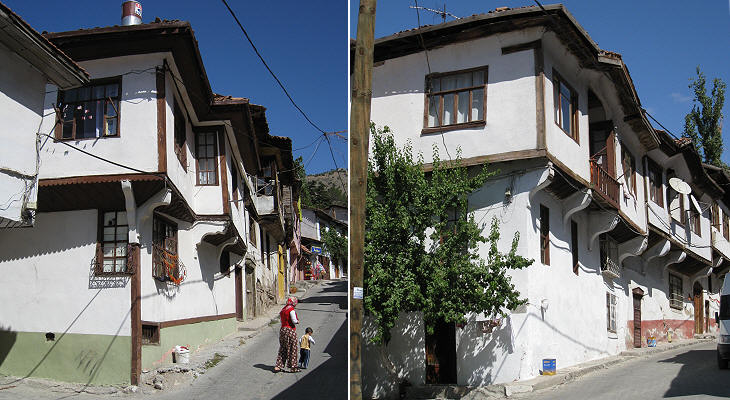  What's New! Detailed Sitemap All images © by Roberto Piperno, owner of the domain. Write to romapip@quipo.it. Text edited by Rosamie Moore. Page added in November 2008. |
 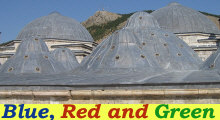 - Amasya - page two: Ottoman Period - Amasya - page two: Ottoman Period(Ali Pacha Hammam in Tokat) The last years of the XIVth century saw continuous fights in Anatolia among the various states into which the region was divided. This was mainly due to the emerging power of Timur, a warlord who was based in Samarkand in Central Asia and who had weakened the power of the Ilkhans; these were the heirs of the Mongol Empire and from Persia they controlled most of Anatolia via a system of vassal states. Ottoman Sultan Yildirim (Thunderbolt) Beyazit I expanded his possessions eastwards and he occupied Amasya. His aggressive policy eventually clashed with that of Timur who invaded Anatolia; Beyazit was defeated and captured at Ankara in 1402. Timur assigned Amasya to Mehmet Celebi, a young son of Beyazit: Celebi means gentleman and it indicates that Mehmet was not the Crown prince; this was Suleyman to whom Timur gave the European Ottoman possessions, while Isa Celebi, a third brother, ruled over Bursa and the nearby region. All three brothers had to pledge their obedience to Timur.
Timur died in 1405: the three brothers started to fight each other; in 1413 eventually Mehmet emerged as the victor and he re-united all the Ottoman possessions (Sultan Mehmet I); he placed his residence at Edirne, but he appointed his son as governor of Amasya. This tradition was continued for more than a century. Beyazit Pacha was an advisor to Mehmet Celebi and he eventually became his grand vizier. In 1419 he built a complex of which only the mosque remains. The most interesting aspect of the building is its portico. The arches are made up of red and white marble blocks and are framed by a dark red stone band carved with arabesques. The whole portico is framed by another band of white marble with a design based on octagons.
A few years later, in 1428, Yorguc Pacha, son of another advisor to Mehmet Celebi, built a mosque which again is characterized by the artistic use of red and white marbles. Materials taken from buildings of the Roman period were utilized for its construction and by going around the walls of the mosque it is easy to notice fragments of ancient inscriptions and decorations.
Sultan Beyazit II was for many years the governor of Amasya before his accession to the throne. He must have enjoyed his stay in Amasya because many buildings date back to the period of his reign (1481-1512). Lala Mehmet Pacha was a tutor of Ahmed, Beyazit's son.
At the court of the sultans, eunuchs could play an important role and achieve significant power: they were in charge of the sultan's harem and knew a lot about the private life of their masters. Buyuk Aga was the Chief White Eunuch which meant being the head of the staff at the Sultan's palace. The medrese he built in Amasya is one of the first examples in which the traditional rectangular courtyard is replaced by an octagonal one. It is also one of the few medreses in Turkey which is still used for a religious purpose. Students in their teens learn Islamic teachings. You may wish to see the students while they learn to sing in a youtube video - it opens in another page.
Earthquakes and fires have damaged many monuments of Amasya. Gumuslu Camii is a very old mosque which dates back to 1326, but it was rebuilt in 1491 after an earthquake. The current building is the result of three major restorations which occurred afterwards: apparently only the minaret retains some original parts.
In 1486 Sultan Ikinci Beyazit II (Ikinci=Second) decided to link his own name to a major kulliye (complex of buildings). The shape of the mosque follows the traditional design of the early Ottoman buildings at Bursa which are characterized by two identical domes.
The complex included a large medrese and the mosque had two very elegant minarets, similar to those of Uc Serefeli Camii at Edirne.
The majority of the monuments of Amasya were built near or along the river banks. Sofular Abdullah Pacha was a beylerbey (Governor-general) of Sultan Beyazit II. He chose to build a mosque on a steep hill opposite the castle, in a district which retains a lot of traditional houses. Hatuniye Camii is another mosque built during this period (in 1510). It is the only one located on the left bank of the river (you can see it in page one). The death of Sultan Beyazit II in 1512 marked the end of a prosperous period for Amasya. The sultans who came after did not show interest in embellishing the town, because they usually had been appointed governors of Manisa, rather than of Amasya.
Amasya was located along an important east-west trade route and it had a large XVIIth century caravanserai (Tas Han), which unfortunately is partially in a ruined condition.
The area between the old great mosque (see in page one Burmali Minare Camii) and the river was the commercial centre of Amasya; in addition to the caravanserai there was a large covered market built by Huseyin Aga in 1483. It also housed an old mosque (1372).
The modernization of Amasya did not affect Hatuniye Mahallesi, the quarter on the narrow strip of land between the fortress hill and the left bank of the river. In particular this quarter retains many traditional yaliboyu (near the water) houses which are shown also in page one and in the introductory page.
Other interesting Ottoman buildings can be seen along the street which crosses the quarter. Many of them have been turned into hotels and guest houses.
Return to page one. Introductory page Safranbolu Kastamonu Taskopru Turhal and Zile Tokat Niksar Hattusa and Yazilikaya Clickable Map of Turkey showing all the locations covered in this website (opens in another window).  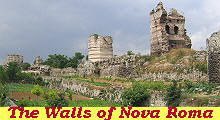  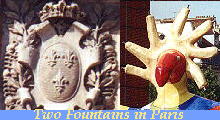 |
